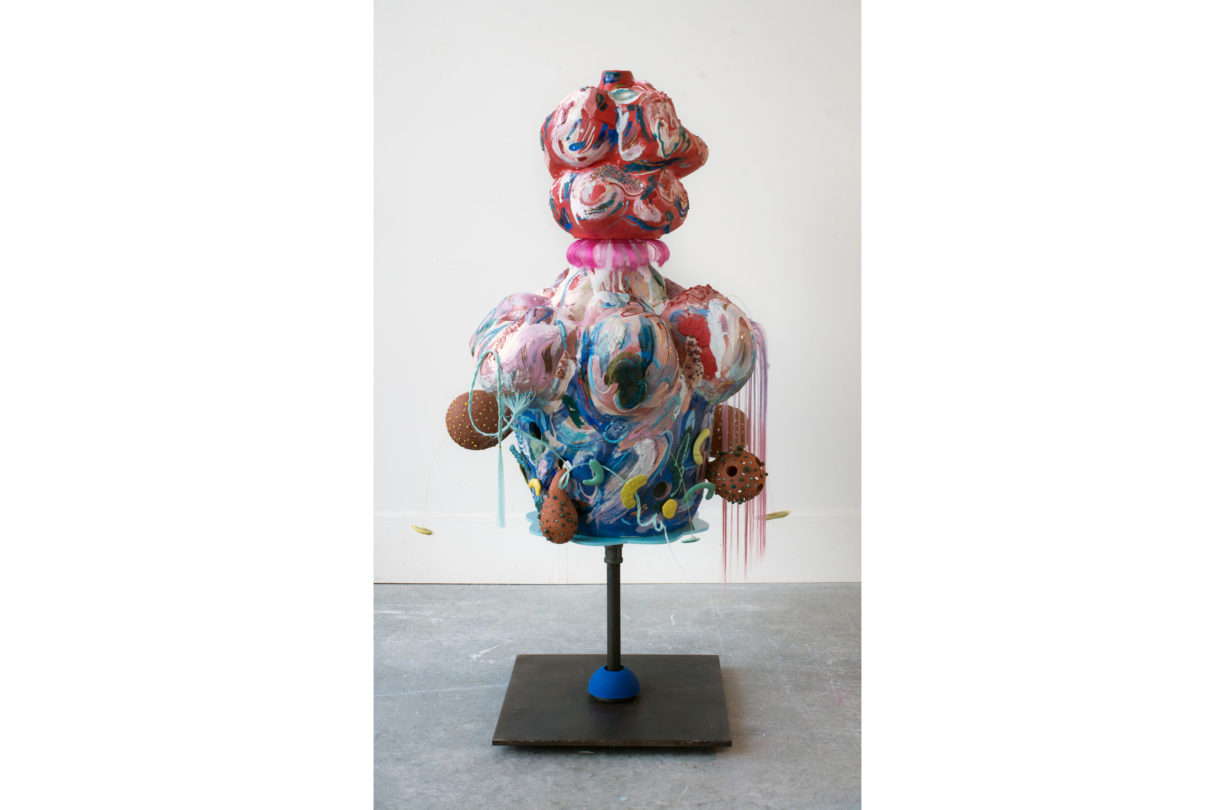Ling Chun
Missing Moon

Traver Gallery is proud to host Missing Moon, a new immersive exhibition by artist Ling Chun. Working in ceramics and neon, Chun explores themes of impermanence and permanence, particularly as they relate to her experience as an immigrant suspended between Chinese and American cultures. While strikingly contemporary in their color, texture, and use of technology, her sculptures reference and celebrate traditional Chinese symbols and rituals.
Chun says, “Missing Moon is an exhibition that explores the moon as a symbol of togetherness in Chinese culture and my search for the meaning of belonging. The full moon symbolizes reunions in traditional Chinese rituals, festivals, ceremonies, and Chinese scholars often mention the moon in their poetry when describing loneliness or being homesick. A feeling which deeply resonates with me. I started paying closer attention to the different perspectives in my relationships with the people around me and reflected on my role as a daughter (and Hong Kong immigrant) who lives abroad. I craved to be in the same time and place as where I belong. Looking for the moon in Hong Kong but staring at the bright sky of the States, where all I find is my missing moon.”
To learn more about this exhibition and the artist, click here to register for our upcoming zoom event, In Conversation | Missing Moon, on March 31st.
-
About
Ling Chun - view profile
I have a drive, a lust and greed for color.
My ceramic forms are “playgrounds for glaze,” and I like to challenge the rules and roles of ceramics by disassociating the material from its stereotypical or culturally accepted uses. Removing still-hot pieces from the kiln, I apply liquid glazes to the surface creating a sizzling sound and a haze of steam until the glaze sticks. It is an intuitive process that emerges through multiple firings and layers of glaze. The work is born of the spontaneous dripping, sliding, running, climbing and crawling that occurs; the movement of the material is my medium.
The use of hair—which I see as a metamorphosis of the clay—serves as an extension of the ceramic process and also transgresses the permanence of clay, resetting the boundaries of ceramics reflected by cultural standards. My work also addresses my transitional stage between multiple cultures and languages through the complex layering of materials onto my ceramic sculptures. I believe contemporary ceramics will serve as a latter-day artifact of our current acknowledgment of cultural identity. It is a material strongly connected with history but never limited just to its heritage—a new age of ceramics will be one where style is no longer restricted to the old forms.
Ultimately, I desire to invite others into my side of the spectrum and to learn and study about how ceramics is more than just clay.
